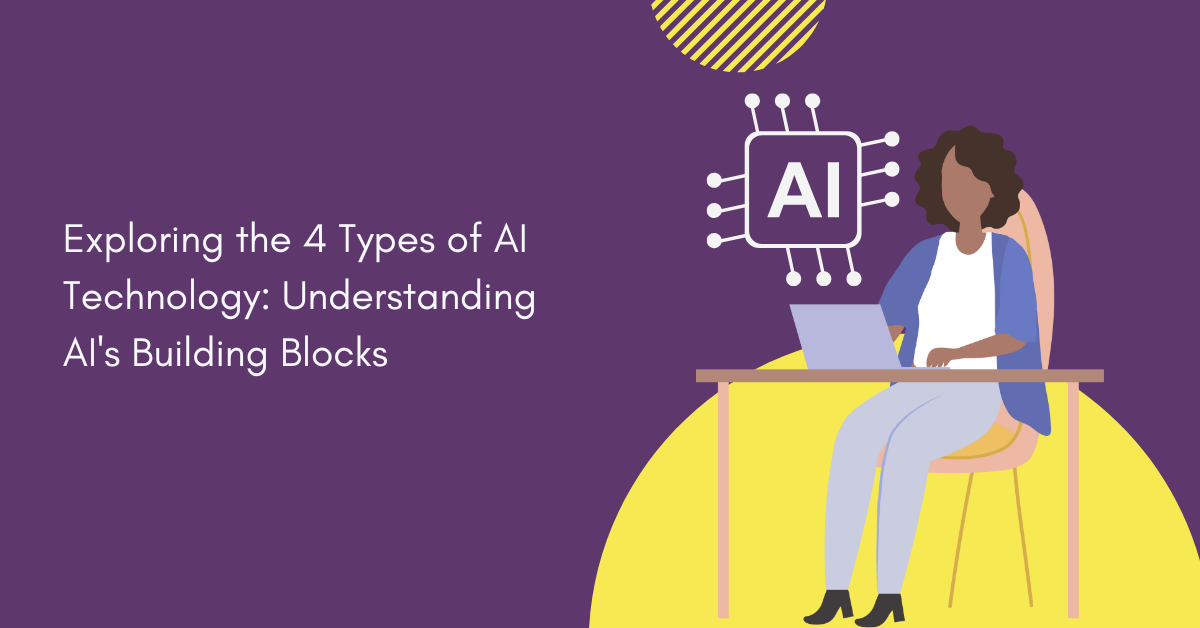What are the 4 Types of AI Technology? Exploring AI Categories
Artificial Intelligence (AI) continues to revolutionize various sectors by offering innovative solutions and enhancing both productivity and convenience. The vast expanse of AI technology can be segmented into four primary categories: reactive machines, limited memory, theory of mind, and self-aware AI. Understanding these categories is crucial for anyone interested in the technological advancements reshaping our world today.
The 4 Types of AI Technology
Reactive Machines
Reactive machines represent the most foundational level of AI systems. These machines are designed to perform a narrow set of pre-defined tasks and respond to specific stimuli without the ability to form memories or use past experiences to influence future decisions. A classic example of a reactive machine is IBM’s Deep Blue, the chess-playing supercomputer that famously defeated world champion Garry Kasparov in 1997. Deep Blue could analyze current positions on the chessboard and compute potential moves, but it had no memory of past games or learning capabilities beyond its pre-established programming.
Despite their limitations, reactive machines offer speed and reliability in specified tasks since they are not weighed down by additional processing for emotions or memories. This makes them highly useful in environments where human error must be minimized, such as the operation of assembly line robots or simple autonomous drones used for basic surveillance.
Limited Memory
Limited memory AI builds upon the foundations laid by reactive machines by enabling systems to store past experiences and use them to make better decisions in the future. This type of AI is essential in more complex applications that require a degree of learning and adaptation, such as self-driving cars. These autonomous vehicles gather data from their environment in real-time (like lane markings, traffic signals, and pedestrian movements), process this information, and learn to navigate roads safely over time.
The capacity for limited memory allows for improvements in AI system performance as they interact with the world, enabling adaptive changes to ensure optimal results in varying conditions. This approach builds a bridge towards more sophisticated AI solutions while circumventing the need for direct human intervention every step of the way.
Theory of Mind
AI systems built upon the theory of mind concept are still in their theoretical stages but represent a significant leap towards understanding and replicating the complexities of human thought processes. The goal here is to develop AI that can understand emotions, beliefs, and intentions—effectively mimicking the human capability of attributing mental states to others. This type of AI seeks to engage in meaningful interactions by interpreting subtle social cues and predicting behaviors accordingly.
Research in this realm is currently focused on advancing AI to accurately assess and respond to human emotions and needs. If successful, theory of mind AI could revolutionize industries involving human interaction, such as healthcare, education, and customer service, by providing empathetic and responsive digital solutions tailored to individual preferences and emotions.
Self-aware AI
The concept of self-aware AI remains largely speculative yet sits at the pinnacle of AI technology aspirations. In theory, self-aware AI would not only understand human emotions and thoughts but would possess self-perception, making it capable of introspection and autonomous decision-making based on its self-assessment.
However, achieving self-awareness in machines presents enormous challenges, not just technologically but also ethically. Concerns about the implications of machines with self-preservation instincts, potential autonomy beyond human control, and the moral dilemmas surrounding the rights of artificially conscious beings are subjects of intense debate and caution among scientists and ethicists alike.
Comparison and Relation Among Types
Understanding the progression from reactive machines to potentially self-aware AI involves recognizing how each type builds upon the foundations of the former. Reactive machines are like the groundwork upon which limited memory systems expand by incorporating adaptive learning. Theory of mind AI represents an evolution seeking to incorporate emotional intelligence, leading to the eventual goal of creating self-aware entities. This cascade of technological evolution showcases not only rising complexity but also broadening applicability across diverse fields.
Applications and Impact of Different AI Types
Real-world applications for AI types span numerous industries, showcasing their potential to drive significant changes in how we interact with technology and each other. For instance, reactive machines are employed in automated systems that require consistent precision, such as robotic arms in manufacturing. Limited memory AI finds use in autonomous vehicles, enhancing safety and efficiency on the roads. Theory of mind applications might soon bring more intuitive personal assistants or therapeutic robots, while speculative discussions around self-aware AI have sparked science fiction narratives and serious scholarly conversations about futures we have yet to fully comprehend.
Each type leaves its imprint on the technological landscape, refining processes, and altering industry practices and societal norms in its wake.
Future of AI Development
The future of AI development promises exciting advances and unforeseen challenges. Researchers are actively working to push the boundaries of each AI category, endeavoring to create machines that not only emulate human intelligence but enhance and extend it in unprecedented ways. We might foresee advancements in neural networks have aiding progress in understanding complex behaviors or breakthrough developments in cognitive architectures bringing us closer to viable theory of mind AI models.
With the rapid acceleration of AI technology, it is vital to balance innovation with ethical considerations, ensuring that future AI developments bring positive changes for all. Collaboration across interdisciplinary fields and ongoing dialogues about ethical AI are crucial as we walk towards a future where artificial intelligence deeply interweaves with the fabric of daily life.
Conclusion
In conclusion, exploring the distinct categories of AI technology offers valuable insights into their developmental progression and potential impacts on society. By understanding these core types—from reactive machines to the theoretical self-aware AI—we better grasp the current capabilities and future possibilities of artificial intelligence. This understanding is pivotal for responsibly navigating and harnessing the potentials AI holds. As AI continues evolving, staying informed ensures we remain active participants shaping the future of technology in a rapidly advancing world.
Call to Action: Stay at the forefront of AI technology by subscribing to our newsletter or following us on social media for the latest insights and updates. Share your thoughts or questions about AI in the comments below—we’d love to hear from you!







